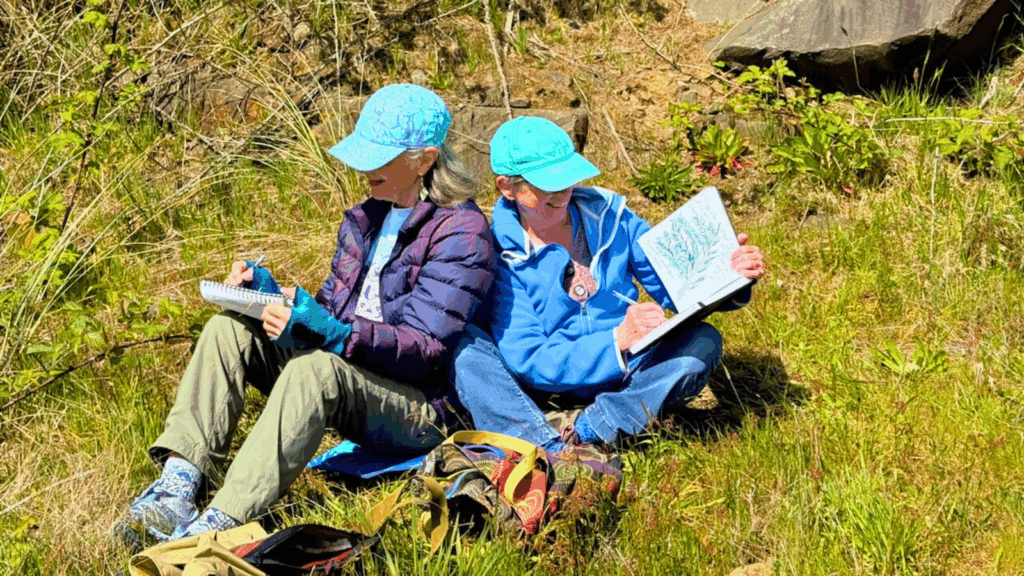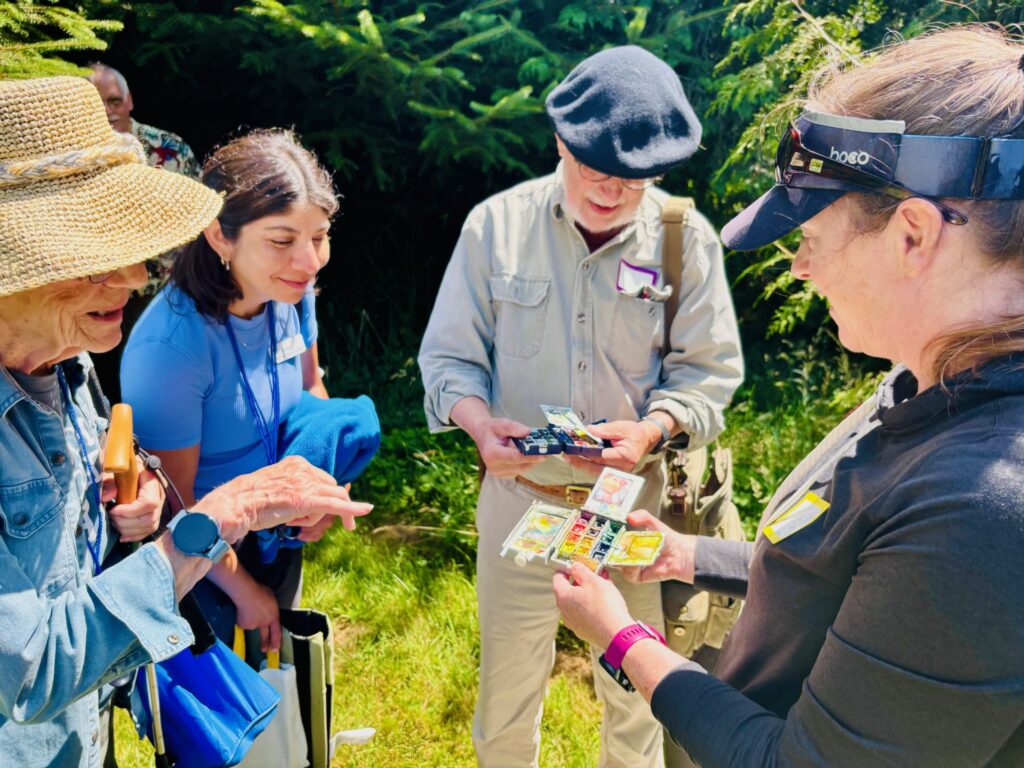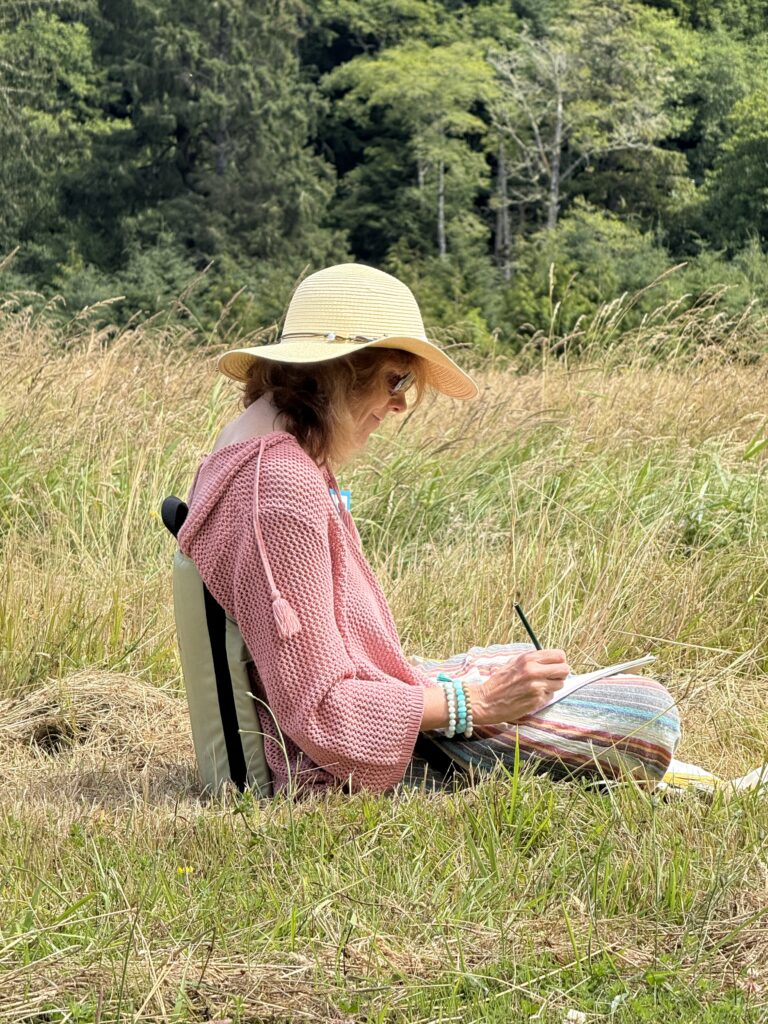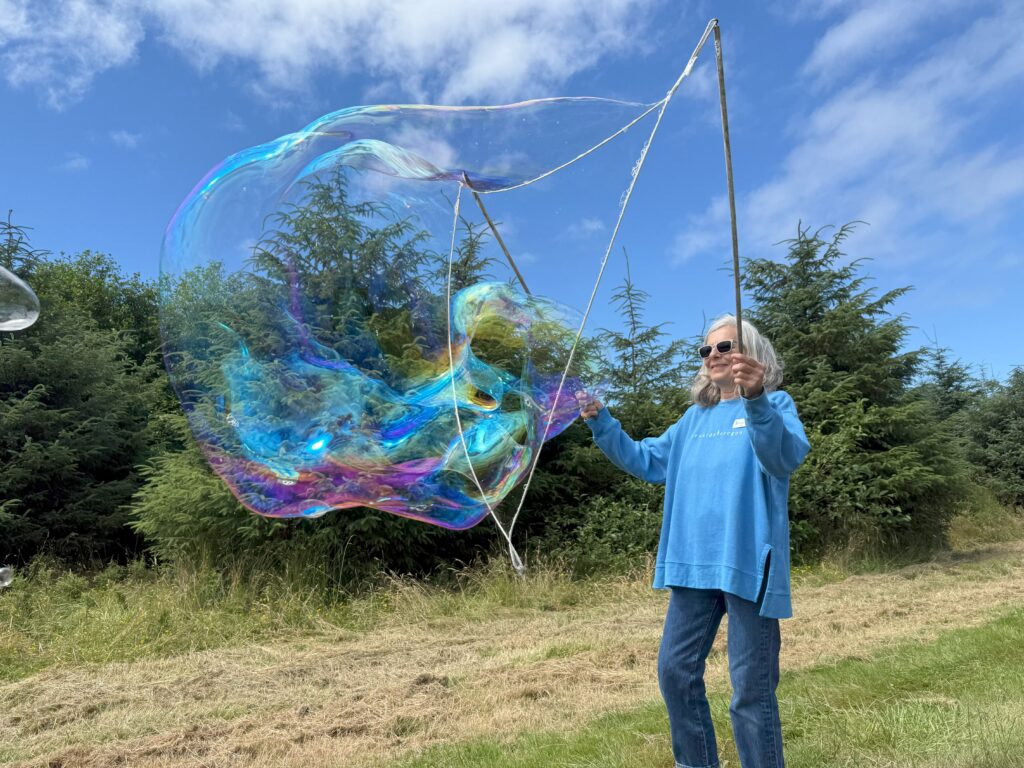This summer, North Coast Land Conservancy introduced a new activity for community members: a six-part workshop series on the art and practice of nature journaling, designed to give participants a meaningful way to engage with nature on the Oregon North Coast and beyond.
Volunteer naturalist guides KT Blue and Marilynn Blacketer—avid nature-journal practitioners themselves—led the workshop series, which took place weekly during mid-July to mid-August at Circle Creek Habitat Reserve, as part of NCLC’s Together in Nature (TIN) program.
According to Community Programs Director Lynette Villagomez, the nature-journaling workshop series was a fun avenue to bring people to Circle Creek, which has been reestablished as the organization’s central hub since the completion of the Circle Creek Conservation Center in Fall 2024. In terms of how NCLC imagines people engaging with Circle Creek, “the possibilities are pretty broad right now,” Lynette says, adding that NCLC staff is exploring the many ways in which they can engage community members and introduce them to the new facilities at Circle Creek.

The goal, she adds, is “to establish a strong sense of place at Circle Creek, to help people feel empowered to come out here on their own if they want,” whether it’s to continue their nature-journaling practice, bring others to enjoy the new facilities or trails, or connect to it in another way.
“We were successful at that,” she says. Additionally, “It helped us think about how people move around at Circle Creek and how to improve the place and make it more accessible in years to come.”
Spreading Awareness About Nature Journaling
KT and Marilynn, who initiated the idea for the series, are longtime friends, retired teachers, and artists; both have volunteered with NCLC in other capacities in the past.
They got into nature journaling during the COVID-19 pandemic, starting off by meeting once per week to do different art projects. Then, they got connected with Wild Wonder Foundation, a nonprofit that is “dedicated to encouraging nature connection and conservation through attention, curiosity, art, science, and community.” The foundation strives to make nature and nature journaling accessible to everyone by sponsoring the annual Wild Wonder Nature Journaling Conference, as well as other events, activities, educational workshops, fieldtrips, teacher trainings, retreats, exhibits, and grants.
Getting connected with the foundation “gave a structure to what we were doing,” KT says. “It took off from there.” Both women completed trainings and are now official Wild Wonder Nature Journaling Ambassadors.
“What I really love about the practice is being in nature, having a focus,” KT adds. “It’s very much like meditation. It’s very quiet. It’s nice to be with other people, but it’s also very solitary. Having the pandemic upon us, it helped me make sense of the world. Connecting with nature is so nourishing. It also sparked my interest in figuring out how things work. And the most beautiful design is nature.”

It doesn’t take a lot of time each day to glean the benefits of nature journaling. Even 30 minutes is “extremely powerful when people sit silently,” KT says. “It’s so cool to be in the middle of the woods and be all alone in your own special spot, but your friends are all around you. It makes a real powerful impact.”
Wanting to share their passion and practice with others, KT and Marilynn pitched the idea of leading the workshop series, as they saw how they could “use it as a way to connect to the mission here,” Marilynn says.
KT adds, “The more you learn about something, the more you care about it; the more you care about it, the more you want to protect it; the more you want to protect it, the more you’re willing to put the work in, to give back.”

Emphasizing a ‘Sense of Place’
Since the workshop series took place entirely at Circle Creek—albeit at different spots around the sprawling reserve—KT and Marilynn chose “Sense of Place” as the central theme for the summer. The weekly topics, or prompts, used to focus each individual session included: an overview of nature journaling; sky; zoom in and zoom out; sound map; poetry; and cartography.
Participants were encouraged to use a combination of pictures, words, and numbers (easily remembered through the phrase Pacific Northwest), or select just one, through which to engage the focus, center their meditation, and document their real-time experiences during the workshop sessions.
In general, nature journaling is designed to be highly open-ended. People are encouraged to engage with the practice in their own personal way. This summer, the participants ranged in age from young children to older adults, demonstrating the accessibility of nature-journaling and its suitability for people of all ages.
The practice also is meant to be free from striving for perfection or self-critique.
“You don’t have to hang it on your wall,” Marilynn explains. “It’s in a journal and you work on it, and you do it for the time, and then you close the book and walk away.”
However, they gave workshop participants the option to share their reflections and found many wanted to do so. “They were very generous about sharing with others at the end of the session,” Marilynn adds. “We enjoyed hearing it and seeing what they’d put together for the day.”
Overall, she and KT felt the program exceeded their expectations, from the number of participants, to their diversity of age and gender and their willingness to fully engage with the practice.
“There was some intention around creating community, and that certainly happened,” Lynette says.

NCLC hopes to offer similar opportunities and activities in the future, giving community members a unique way to be Together in Nature and to connect with local conservation. Stay tuned for another six-part nature journaling series next summer!



Comments